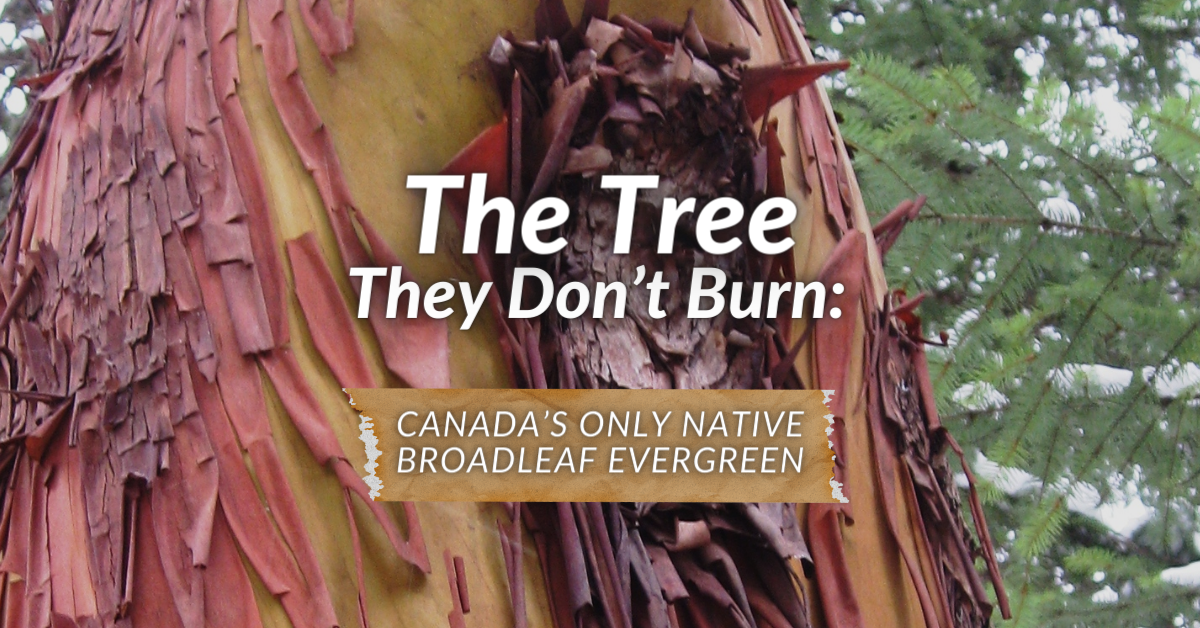Introducing Canada’s only native broadleaf evergreen….the arbutus, also known as qaanlhp by the Quw’utsun Mustimuhw (a Coast Salish people) and ḰEḰEIȽĆ (qwəqwəy-ílhch) by the W̱SÁNEĆ (Saanich).
What is a broad-leaved tree?
A broad-leaved tree has flat leaves and grows seeds inside its fruits.
What is an evergreen tree?
An evergreen tree has leaves that remain green and functioning for more than one season of growing.
What do we love about them?
They’re easy to spot with their reddish-brown bark, which peels in thin flakes revealing the light bark underneath. They also have glossy dark green leaves that feel like leather to touch.
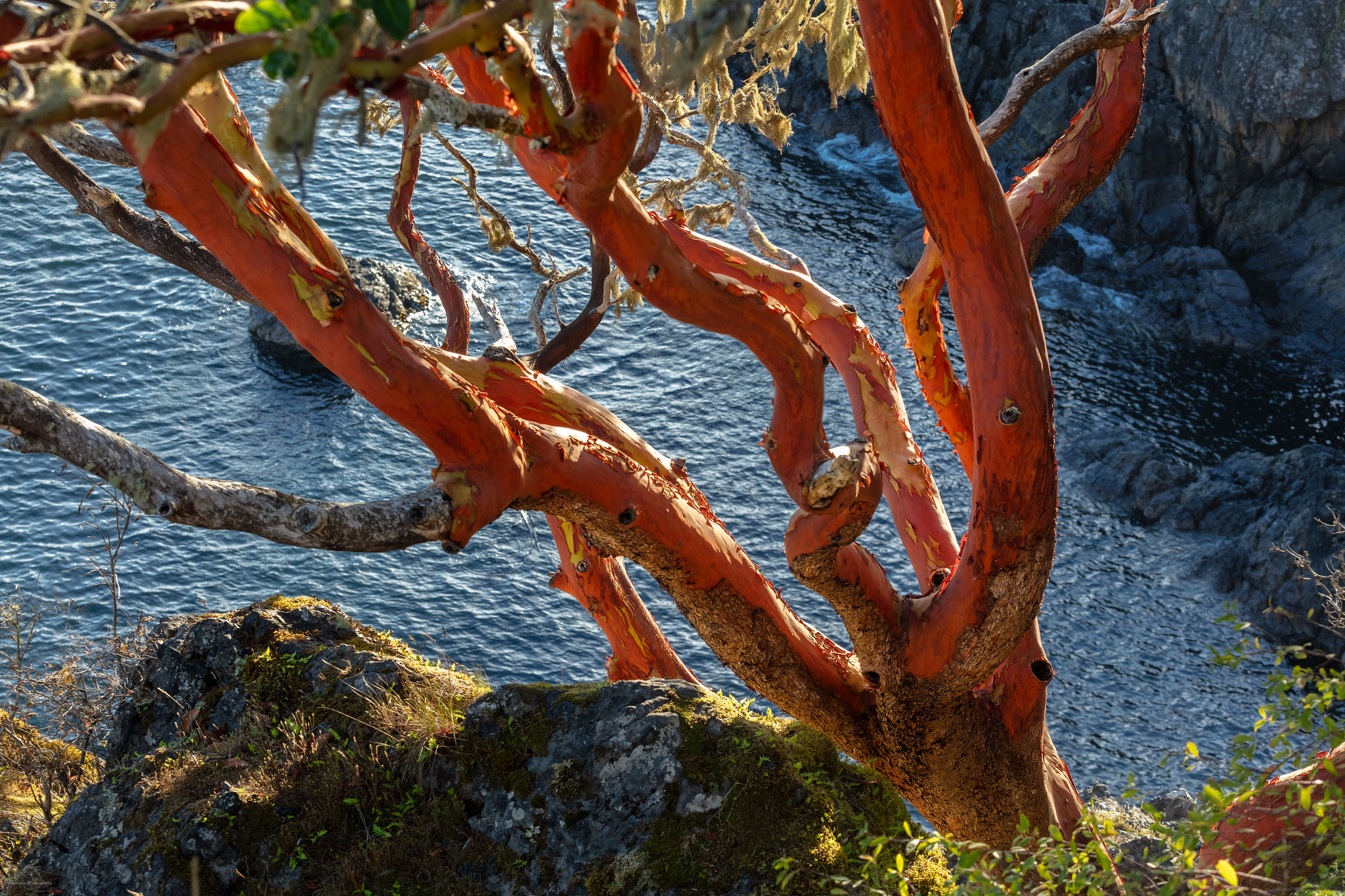
 Where are they found in Canada?
Where are they found in Canada?
Arbutus trees are found where there is little moisture and lots of sun, which usually means you’ll often find them on exposed rocky bluffs by the ocean!
In Canada, they can only be found in Vancouver Island and the southern coastline of British Columbia, known as the Georgia Depression. It lies in the territories of many First Nations including Semiahmoo, Tsleil-Waututh, Musqueam, Tsawwassen, T’Sou-ke, Esquimalt, Songhees, Saanich, Coquitlam.
What do they look like?
Growing to up to 30 metres tall, its often crooked or leaning trunk divides into various twisting branches growing upwards, making its crown irregularly shaped.
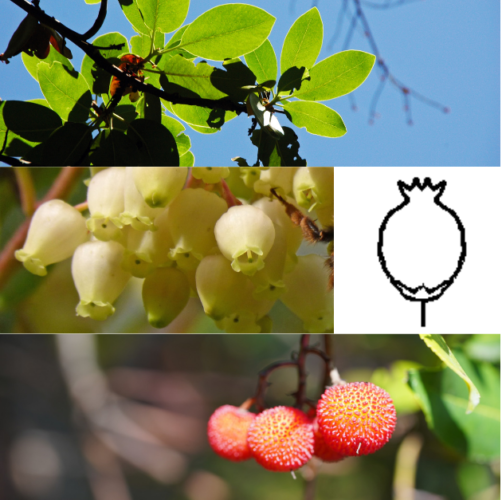
Leaves. Thick and leathery, the leaves are dark and glossy on top and pale underneath. They are usually between 7 to 12 cm long.
Flowers. The white, waxy, urn-shaped flowers droop off the ends of twigs in dense clusters in April or May.
Curious about the various shapes flowers can have? See a list here!
Berries. The bright orange-red berries, about 7 mm wide, grow in the late summer and fall. Although edible, they’re not very flavourful to humans.
The arbutus through the seasons
The white flowers bloom in the spring followed by the bright orange-red berries in the late summer and fall. The berries then shrivel and grow barbs that stick to animals, which move them around and effectively plant new arbutus trees elsewhere! Every year, a new layer of bark grows as the old layer peels off. This new layer of green bark can make its own food for the tree using the sunlight through photosynthesis!
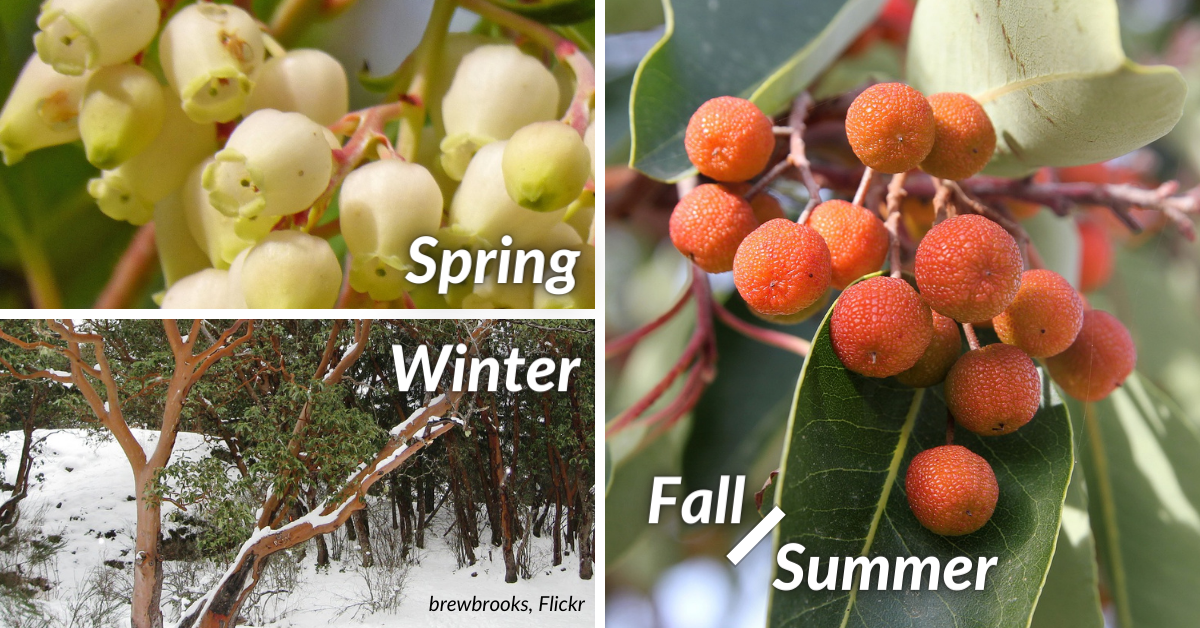
Friends of the arbutus
You might spot some Garry oak or Douglas-fir, oceanspray, Oregon-grape, and baldhip rose, to name a few, around an arbutus tree.
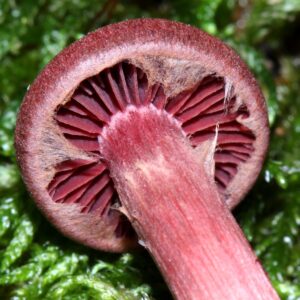
Bees love its sweet-smelling flowers and the berries are perfect for the birds such as crows, ravens, woodpeckers, waxwings, robins.
Hollowed and rotting centres of arbutus trees are great places for the rare mushroom, Tubaria punicea (Christmas naucoria) to grow.
Indigenous peoples and the arbutus
“In the beginning it was the Saanich teaching to look after Mother Earth. All of the animals, the birds, the trees and the salmon, even the wind, were, and still are, people.
For many years the people remembered the words of the creator (XÁLS) and there was a long period of happiness and plentiful food. Then they began to forget those teachings.
The creator’s feelings were hurt that the people began to forget his good teachings, so the creator told the people that a great flood would come and said: “You prepare yourselves.”
The people prepared a cedar rope and gathered their food and all of their possessions. The tide waters began to rise. The people loaded all of their belongings into their canoes.
Some people did not heed XÁLS teachings. They were not prepared and were washed away. Their canoes were destroyed.
The water rose higher and higher. The people paddled to the highest mountain nearby. The trees were still above the water. They tied themselves to an arbutus tree on top of the mountain.
Soon the tops of the trees were covered with water. They were afraid and prayed to survive the great flood. They asked XÁLS to take pity on them.
After many days, a crow came and landed on the bow of the canoe. He was carrying a stick and was talking to the people. The crow had brought the good news.
Suddenly a mountain began to emerge in the distance. One of the men said, “NI QENNET TTE W̱SÁNEĆ”, (translated means, “Look at what is emerging”), as he pointed to the mountain emerging in the distance.
Before they left the mountain, they gathered around the huge coil of cedar rope and gave thanks. They said from now on this mountain will be called LÁU,WELNEW (Place of refuge). They also said, “We will be called the W̱SÁNEĆ” (The emerging people).
XÁLS heard their prayers. XÁLS said he would not punish the people by flood again. The people who were saved are the ancestors of the Saanich Tribe today.”
From the W̱SÁNEĆ Leadership Council
The arbutus plays an important role, helping people survive the Great Flood. Out of gratitude, the W̱SÁNEĆ do not burn it.
The WSANEĆ peoples also used the bark and leaves of the arbutus to help treat colds, stomach problems, cramps, burns, wounds, diabetes and as a contraceptive. They made necklaces and beads out of dried berries, and tanned and cured hides with the bark.
Your Turn
If you live or are near the area where the arbutus tree is found, can you spot one? Tag us in a photo! What trees native to your area can you spot? Let us know!
Learn more about trees and join our science and community-based climate action initiative, the Million Tree Project, supported by CCUNESCO, Tree Canada and NSERC!
